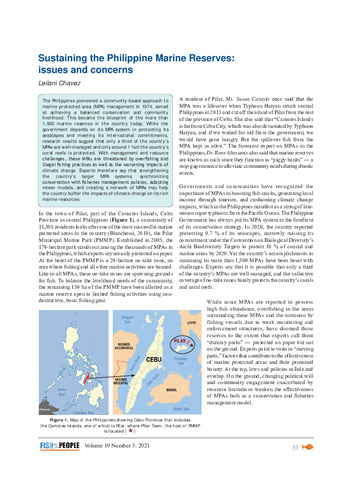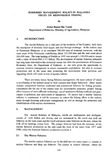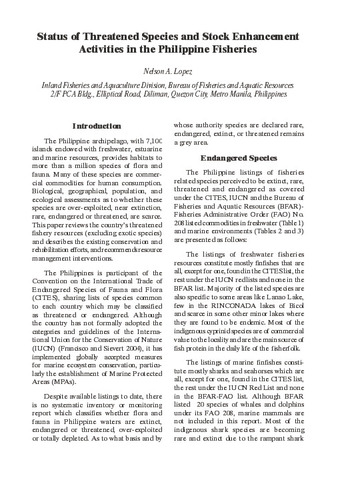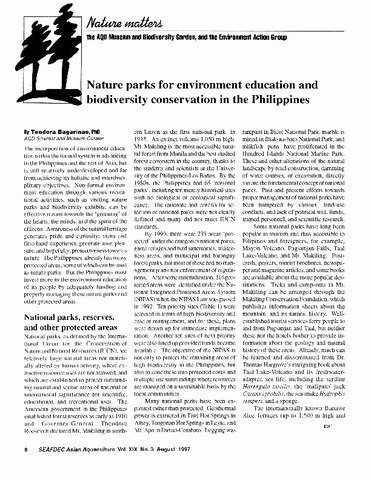Sustaining the Philippine marine reserves: issues and concerns
Share
| dc.contributor.author | Chavez, Leilani | |
| dc.date.accessioned | 2022-02-10T02:26:06Z | |
| dc.date.available | 2022-02-10T02:26:06Z | |
| dc.date.issued | 2022-01-09 | |
| dc.identifier.uri | http://hdl.handle.net/20.500.12066/6755 | |
| dc.description.abstract | The Philippines pioneered a community-based approach to marine protected area (MPA) management in 1974, aimed at achieving a balanced conservation and community livelihood. This became the blueprint of the more than 1,500 marine reserves in the country today. While the government depends on its MPA system in protecting its seascapes and meeting its international commitments, research results suggest that only a third of the country’s MPAs are well-managed and only around 1 % of the country’s coral reefs is protected. With management and resource challenges, these MPAs are threatened by overfishing and illegal fishing practices as well as the worsening impacts of climate change. Experts therefore say that strengthening the country’s larger MPA systems, synchronizing conservation with fisheries management policies, adapting newer models, and creating a network of MPAs may help the country buffer the impacts of climate change on its rich marine resources. | en |
| dc.language.iso | en | en |
| dc.publisher | Secretariat, Southeast Asian Fisheries Development Center | en |
| dc.subject | marine protected areas | en |
| dc.subject | Philippines | en |
| dc.title | Sustaining the Philippine marine reserves: issues and concerns | en |
| dc.type | magazineArticle | en |
| dc.citation.volume | 19 | en |
| dc.citation.issue | 3 | en |
| dc.citation.spage | 33 | en |
| dc.citation.epage | 39 | en |
| dc.citation.journalTitle | Fish for the People | en |
| dc.subject.asfa | marine parks | en |
| dc.subject.asfa | protected areas | en |
| dc.subject.asfa | environmental protection | en |
| dc.subject.asfa | nature conservation | en |




